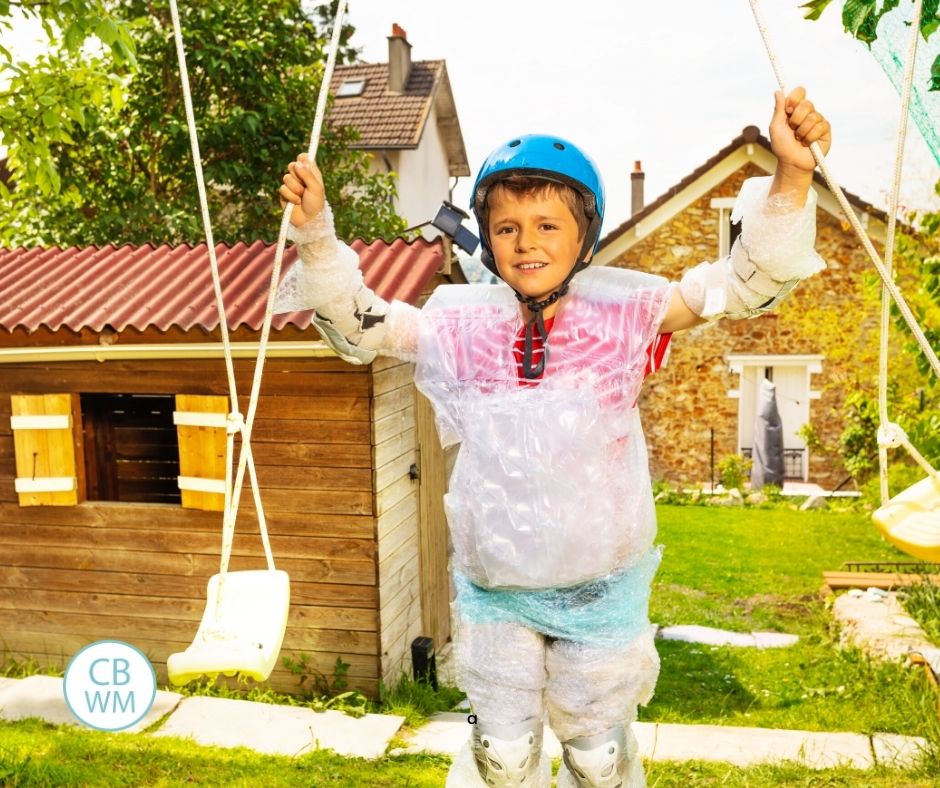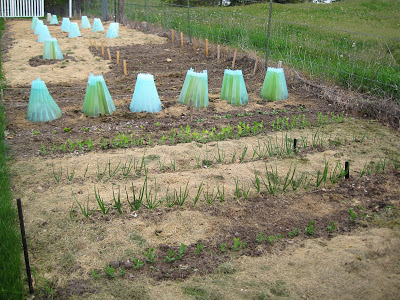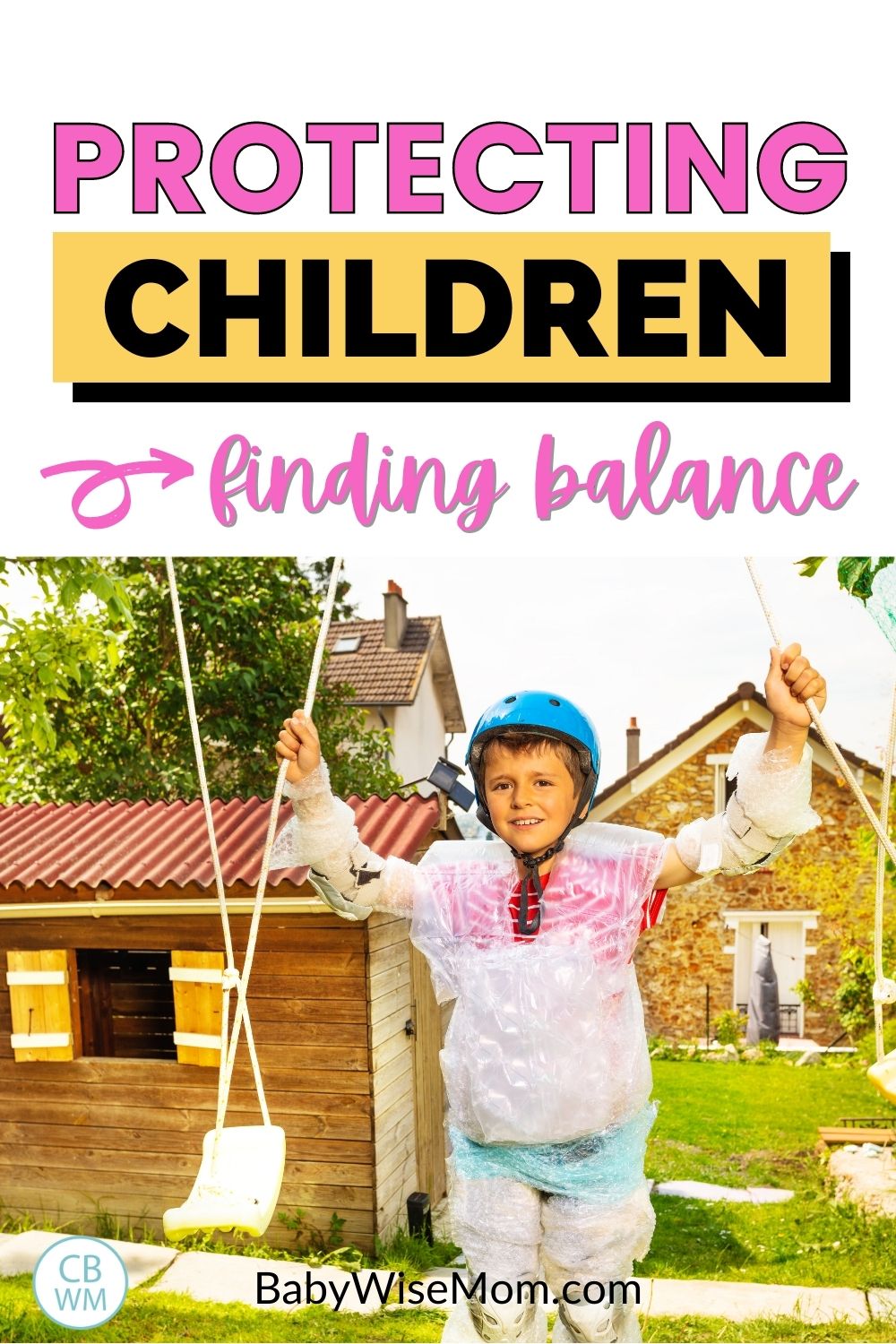How much is too much protection? Can you protect your child too long? Will that lead to long-term issues if you do?

As parents, we really, really want to protect our children. Fiercely.
We don’t want them hurt physically, emotionally, or mentally. Because of this, we often worry about letting our children out into the world, whether for playing with neighborhood kids, attending dance class, or going to school.
This was a discussion I recently had with fellow Babywise moms. At what point do you start to let go? How long do you protect your kids? Do you let go? Can you control the environment–and if so, for how long?
The point was made that we protect seedlings in the garden and often in a greenhouse, so we should protect children. This led me to think about my gardening experience.
As I wrote a couple of weeks ago, Parenting is Like Gardening. There are so many analogies you can make. This one, for me, is very powerful. It is probably because I have a lot of experience with it.
I live in a colder climate. In order to grow tender plants like peppers, tomatoes, cucumbers, pumpkins, cantaloupe, watermelon, and zucchini, I need to protect them in the spring months.

Take a look at the picture above. You can see several blue and green plastic things in my garden. These are called “wall-of-water.” They act as a mini greenhouse. They protect the plants from frost.
These wall-of-waters work very well at protecting plants. I liken them to the protection we put over our children. They keep the heat in and cold out. The air inside the wall-of-water is very warm and humid. The plants (likened to children) grow quickly and safely.
But you can protect the plants too long and lead to stunted growth.
Over the years, I have experimented with my wall-of-water. You can’t leave the wall-of-water on all season if you want the plant to get strong and produce fruit.
One of my first seasons planting a garden, I left them on too long. I wanted to make sure all danger of frost was past.
When I finally removed the wall-of-waters, the plants were too big and broke as soon as the wall-of-water was gone. They had not strengthened to support themselves because they relied on the wall-of-water too long. They then had a lot of time to make up once they were out of the wall-of-water.
Another problem with leaving the wall-of-water on too long is that the bees cannot get in to pollinate. The plant is unable to produce fruit with the blossoms it has because there is no pollination happening.
The next year, I knew I needed to get the wall-of-water off before the plant got too big and early enough for pollination. I removed them at the size I figured was best.
Sizing-wise, I was correct. The problem is, it was still often cold, and the plant went into some major shock at suddenly losing all protection at a young and tender size.
I had done some experimentation and not protected some peppers while protecting others. It turned out the peppers I did not protect became stronger plants that produced more at harvest time because the protected plants went into so much shock after losing the protection.
After several years, last year I finally perfected my wall-of-water use.

Instead of just removing the wall-of-water when the time seemed right, I opened them up for a period of time before removing them altogether.
I removed some of my protection over the plant, but still kept some protection. This helped the plant get used to air that was not as warm and humid without removing all warmth and protection. It also allowed bees to pollinate. You can see this in the picture above.
Another thing you might notice in the picture above is that one of the plants does not have a a wall-of-water that used to. This was the pumpkin plant. This plant was ready to have the wall of water removed before the others.

After some time, I removed the wall-of-water completely. Some plants were then ready to continue on without support. Others, like tomatoes, still needed some support in the form of tomato cages. You can see the plants all without wall-of-water in the picture above.
Relating This Lesson to Parenting
So how does this all relate to parenting?
First, we do need to protect our young and tender children. We need to control their environment.
They can be negatively affected by the world around them and they need that environment controlled.
>>>Read: Should You Control the Environment of Toddlers?
As they age, we need to allow them to be exposed to the world a little more. I am not talking about exposure to bad things, but given freedoms that are age appropriate.
If we leave the protective barrier over them too long, we slow down and lesson their ability to produce fruits as well as weaken them overall–we weaken their ability to stand against the elements that life will bring them at some point.
When the child is ready, we remove that protection all together. Not all children are ready at the same age for this. Some are ready earlier than others. For some, even though they are ready for the protection to be removed, they still need some support.
You can’t maintain all control and you can’t keep your child in a bubble forever. You are raising future adults. They need to learn how to become one.
>>>Read: How Much Control Should You Give Teens
Here is the trick to parenting: figuring out when to remove protection. What age? What exposure is okay? How often do you remove protection at first? And so on.
There is no one right answer–not from family to family nor from child to child within a family.
Parenting with Love and Logic talks about letting our children fail while the stakes are low. It is okay for kids to fail. It is okay for them to fall and get hurt. These things help teach them.
Before this sounds like an impossible and terrifying task, let me assure you, children, like plants, are able to bounce back when we mess up. I once left a young pumpkin plant exposed on a night with a hard freeze. That plant turned as black as night and appeared to be dead.
Hoping it had some life, I continued to water it. That pumpkin plant came back and produced very well. You never would have known it was once considered dead. So long as we continue nurturing and caring for our young children, they can make it just like that pumpkin plant did.
This all goes back to the concept of parenting inside the funnel that is discussed in the very first Babywise book. We need to always be mindful of parenting in the funnel and allowing enough freedoms.
Stay mindful. Stay observant. Stay invested. Stay prayerful. Your children will turn out great!
Related Posts
- How Too Many Freedoms Leads to Disobedience
- How to Keep Siblings in the Funnel
- How to Teach a Child How to Make Decisions
- Start as You Mean to Go On as a Parent

